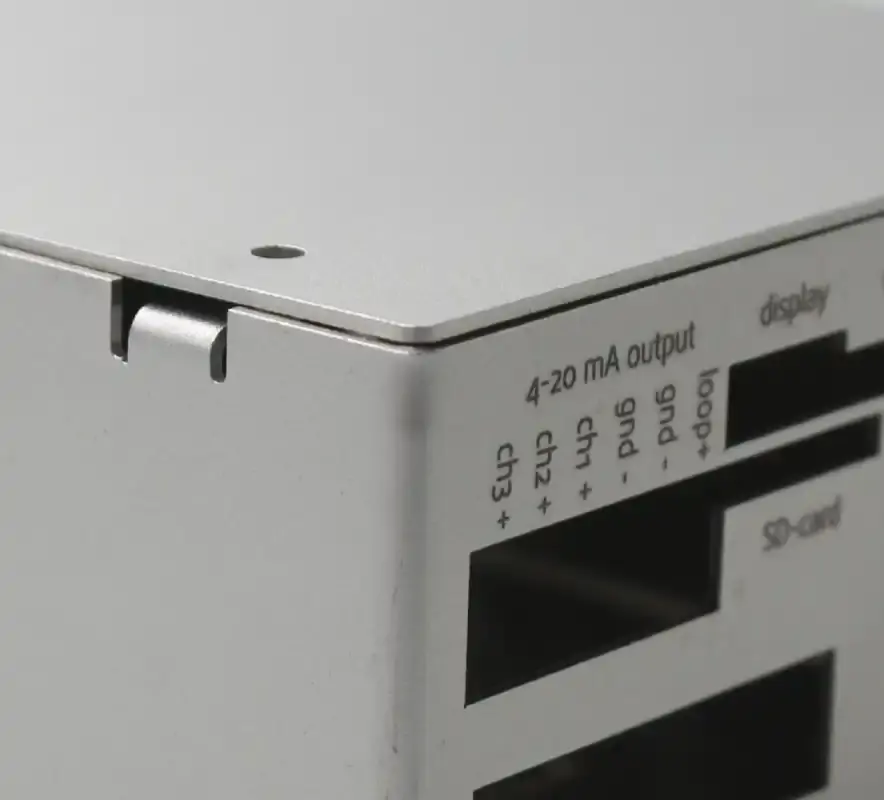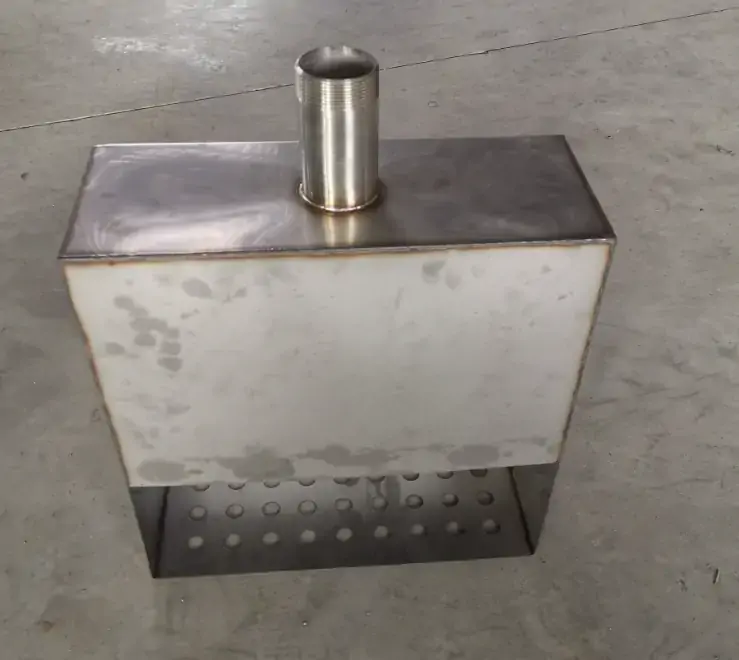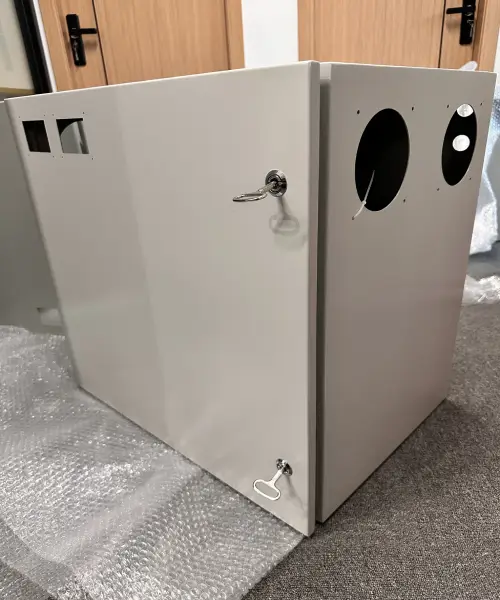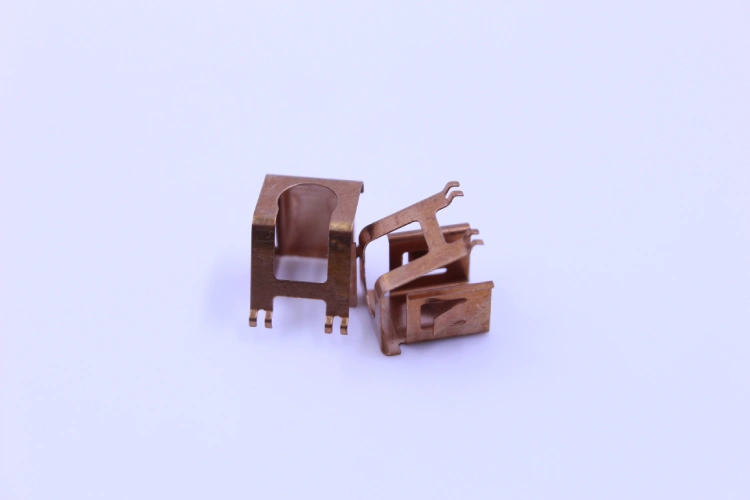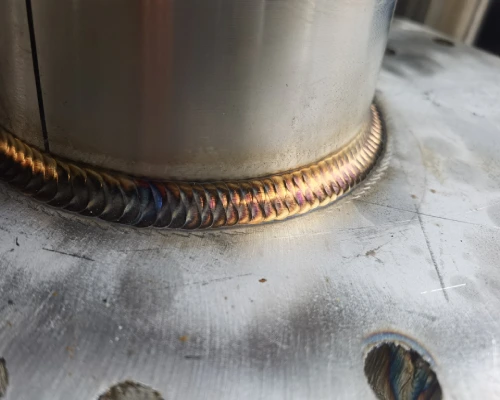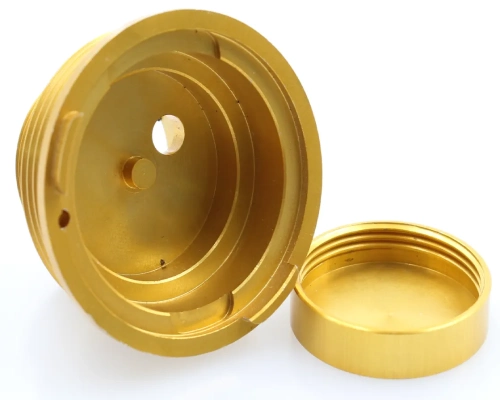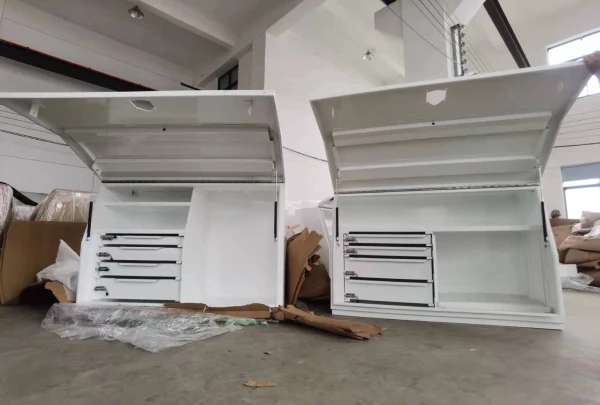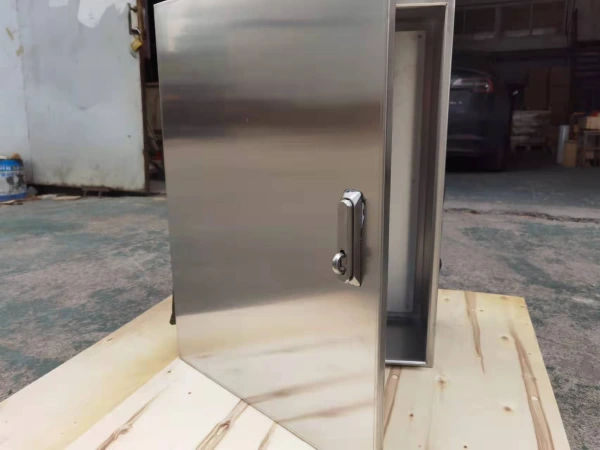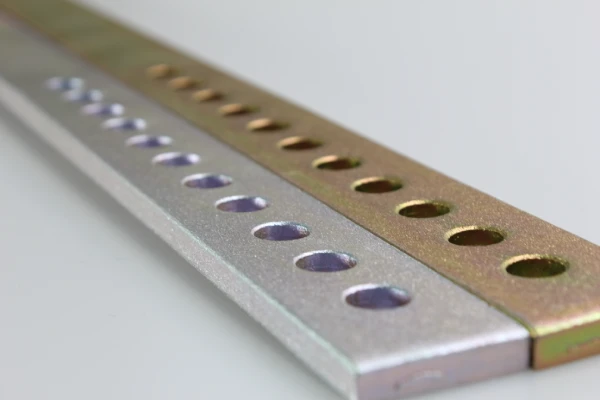This guide provides an overview of the main sheet metal bending process techniques, their advantages and disadvantages as well as product design considerations, and there is also a detailed discussion on practical tools and material selection. It is beneficial for you to explore the most economical sheet metal bending manufacturing process, and you can make better use of the technology to avoid some common mistakes and wastage, and to make your design solution more satisfying for the DFM program. If you have doubts and questions about our technical articles, you can feel free to contact our team of online engineers, and we are very much looking forward to discussing and exchanging ideas in depth with you.
What is sheet metal bending?
CNC sheet metal bending manufacturing is a manufacturing process for forming thin sheet materials. Many engineers underestimate the flexibility and cost-effective features of the sheet metal bending manufacturing process. In the field of sheet metal fabrication, bending is a key process in which flat sheet metal material is plastically deformed by the force of a die to obtain a part with a specific angle and shape. Bending process is widely used in various industries, from simple bracket to complex chassis shell, are inseparable from the application of bending technology.
The process can be fully automated through cnc bending machines and boasts highly efficient batch manufacturing, which can deliver bulk manufacturing orders in a very short period of time and without the need to invest in costly molding tooling. With a high level of reproducibility and flexibility, the sheet metal bending manufacturing process is widely used for medium-sized batch manufacturing in the hundreds to thousands.
Sheet metal bending manufacturing technology is a widely used sheet metal forming process, often used as the preferred manufacturing solution for developers, designers, engineers and others of metal parts. When laser cutting technology is combined with sheet metal bending technology, it can be applied to a wider range of manufacturing solutions for medium to small volumes, especially for small to medium volume and rapid prototyping projects, which are the most suitable options.
A good understanding of customized sheet metal bending manufacturing process technology is very helpful for product design. When product design engineers have the flexibility to use this technology, they can cost-effectively create product design solutions for a variety of structures and complex shapes. Utilizing a sheet of metal that has been precision cut, bent, and welded to form multiple components as well as a finished product offers unparalleled advantages in terms of cost reduction, strength improvement, weight reduction, and production efficiency.
Order online through Supro MFG’s on-demand sheet metal fabrication platform to enjoy huge discounts.
Rapid Prototype Turnaround
Committed to exceeding expectations for quality and rapid turnaround, and meeting high-quality sheet metal parts.
On-Demand Sheet Metal
Whether it is rapid prototyping & large-volume manufacturing, we will implement it according to customer needs and standards.
Real Fabricators Price
Integrate product design, bending, stamping, cutting, surface treatment, etc. to provide a series of manufacturing solutions.
Types of Sheet Metal Bending
Depending on the different forming methods and tools used, common sheet metal bending techniques can be categorized into V-bending, U-bending and multiple bending, exploring their principles, characteristics, application areas and comparisons with each other.
V-bending: the most widely used bending method
V-bending principle: V-bending using the bending machine V-shaped upper die (punch) and V-shaped lower die (concave die), through the downward movement of the upper die, forcing the sheet metal material bending deformation in the V-shaped concave die, so as to obtain the required angle (acute, right angle, obtuse angle) and the shape of the bending parts, is the most widely used bending method.
V-shaped bending features: V-shaped bending has a wide range of applications, simple equipment, easy to operate, the advantages of low cost, but also need to take into account the rebound effect of the material and compensation; to achieve a variety of angles of bending, suitable for most of the sheet metal parts of the bending needs, and the equipment required usually only need a bending machine and a set of V-shaped mold can be operated on the technical requirements of the operator is not high.
V-shaped bending application scenario: V-shaped bending is widely used in chassis cabinets (such as computers, server cabinets, distribution cabinets and other shells), household appliances (such as refrigerators, washing machines, air conditioners and other shells), architectural decorations (such as metal doors, windows, curtain walls, suspended ceilings, etc.) as well as automotive manufacturing (such as body coverings, structural components) and many other areas.
U-shaped bending: process to achieve a smaller bending radius
U-shaped bending principle: U-shaped bending and V-shaped bending are similar to the use of bending machine molds to achieve, but the shape of the upper die (punch) and the lower die (concave die) in the shape of a U-shape, through this special shape of the mold, U-shape bending is usually used to achieve smaller bending radius of the bending needs.
U-shaped bending features: U-shaped bending can achieve a smaller bending radius than V-shaped bending, and sheet metal material and mold contact area is larger, more uniform force, is conducive to improving the quality of bending parts, reduce deformation and defects, but accordingly the precision of the bending machine and the mold manufacturing precision requirements are higher, the mold cost is also higher.
U-shaped bending application scenario: U-shaped bending is mainly used in the bending radius of the special requirements of the occasion, such as electronic products (such as cell phones, tablet computers, etc., internal metal brackets, connectors), medical equipment (such as surgical instruments, medical equipment shells), as well as precision instruments (such as optical instruments, measuring instruments, etc., the internal metal structure of the parts) and other fields.
Multiple Bending: A Way to Realize Complex Shapes
Principle of Multiple Bending: Multiple bending refers to the multiple bending of the same sheet metal part, which can be combined with different bending methods such as V-bending, U-bending, and so on, to realize a variety of complex geometrical shapes through multiple bending operations, which is the main way to obtain complex spatial shapes of sheet metal parts.
Multiple bending features: Multiple bending has a high degree of design freedom, and can achieve a variety of complex sheet metal parts design to meet the needs of diversified products, but the process is relatively complex, the need to accurately control the angle, position and sequence of each bending, usually requires the use of multi-station bending machine or bending machine equipped with a special tooling, resulting in a relatively low production efficiency.
Multiple bending application scenarios: Multiple bending is mainly used in the manufacture of sheet metal parts with complex shapes, such as aerospace (e.g., all kinds of complex shapes of metal components inside the aircraft), automotive manufacturing (e.g., all kinds of shaped parts inside the automobile body), and a variety of customized products and other fields.
Comparison of V-shape, U-shape and Multiple Bending
V-shape bending is the most commonly used bending method due to its wide applicability, lower equipment and tooling costs, and ease of operation, and is capable of achieving a wide range of bending angles. In contrast, U-bending, although equipment and tooling costs are higher and the process is relatively complex, it can achieve a smaller bending radius, suitable for applications with special requirements on bending radius. Multiple bending is unique in realizing complex shapes, allowing for a high degree of design freedom, but the process is the most complex and the production efficiency is relatively low, usually requiring more advanced equipment support.
Summary
In actual production, the choice of which bending method to use depends on a combination of factors such as the design requirements of the sheet metal part, material properties, production lot size and cost. A full understanding of the principles, characteristics and applications of these bending processes will help engineers and technicians to make smarter decisions in the design and manufacturing process, thereby improving product quality and productivity. With the continuous development of sheet metal processing technology, the bending process will move in the direction of more refinement, automation and intelligence, providing stronger support for the sustainable development of the manufacturing industry.
Our article on “Value-added Processing of Sheet Metal Components” provides more information.
online custom metal fabrication parts
Only 4 steps
Contact our experts team and experience the efficiency and economic benefits of digital metal fabrication services.
Upload Design Files
STL , STEP (.stp), IGES (.igs), (.ZIP), or PDF.
Also be a sample or an idea
Quote & Design Analysis
Instant factory quotes and DfM reports, the most reasonable solution.
Manufacturing Begins
Digital processes can initiate order tasks within 24 hours.
On-Time Delivery
Keeping delivery promises, approved by 3000+ Global Company buyers.
Commonly used sheet metal bending process
Sheet metal process, this metal processing process, covers shearing, punching/cutting/compounding, bending, riveting, splicing, and molding. Its object is mainly sheet metal with a thickness of less than 6mm, such as steel plate, aluminum plate and copper plate. These processes result in sheet metal products with uniform thickness and solid structure, which are widely used in automobiles, electronic equipment and many other fields.
The sheet metal process covers a number of processes, including shearing, punching/cutting/compounding, bending, riveting, splicing and forming. These processes are applied to sheet metal to produce products with uniform thickness and solid structure.
Customized sheet metal parts manufacturing process.
Shearing: Including shearing machine shearing, laser cutting, flame cutting, etc., the whole sheet metal is cut into small pieces according to the desired shape.
Punching/cutting/compounding: the holes, slots, etc. of the desired shape are processed by punching machine or other compound punching and cutting equipment.
Bending: The metal sheet is bent to form the desired shape by using a bending machine.
Riveting: Different parts are riveted together by rivets or riveting equipment to enhance structural strength.
Welding: Combine and weld multiple sheet metal parts to form complex structures.
Forming: Using techniques such as stretching and bending, sheet metal materials are processed into the required complex shapes.
Bending process steps
Prepare materials: Select suitable metal sheets and clean the surface.
Setting up the equipment: Adjust the bending machine and the molds according to the bending requirements.
Apply force: Place the sheet metal between the molds and apply force through the bending machine for bending.
Quality check: Check the bent sheet metal to ensure that the bending angle and shape meet the requirements.
Advantages and Disadvantages of Sheet Metal Bending
Sheet metal fabrication bending technology is widely used in manufacturing industries such as automotive manufacturing, aerospace, home appliances, and electronic equipment. Common products include metal housings, brackets, cabinets, electronic equipment housings, and so on.
Although the sheet metal manufacturing process is a cold working molding technique, it is used to create 3D structures by using technology and creativity to create metal sheets. From automotive manufacturing to space shuttles, from precision electronic equipment to environmentally friendly medical devices, sheet metal bending offers a great deal of flexibility in terms of the type and thickness of metal that can be bent, and can be used to create sheet metal parts and assemblies for a wide variety of industries, including automotive, transportation, home appliances, furniture, industrial equipment, and more.
In many cases, with the advent of precision laser cutting and CNC bending machines, a single piece of sheet metal can be quickly produced as a complete part. Combined with manufacturing techniques such as welding and riveting, it is easy to produce an entire part from a single piece of sheet metal, drastically reducing costs and production time.
Advantages
Flexibility in material selection - Sheet metal processing can use different kinds of metal materials, such as cold rolled sheet, hot rolled sheet, galvanized sheet, copper, aluminum, stainless steel, etc., and can be made according to the customer's needs to produce products of specific specifications and materials.
Speed of Manufacturing - Utilizing advanced CNC sheet metal bending machines, which can be highly automated once the design and programming have been determined, sheet metal prototype parts can be produced very quickly as well as to meet the demands of large volume orders.
High Processing Accuracy - Sheet metal processing technology offers a high level of processing accuracy, enabling the production of high quality, high precision parts and products, in some cases to an accuracy level of ±0.05 mm. Controlled batch reproducibility is the most advantageous in ensuring a high level of accuracy.
Reduced post-processing - As a manufacturing technique for cold working metals, product surfaces are rendered smooth without high temperature distortion and material property changes. Only aesthetic painting or chemical plating is required to present an artistic and aesthetic appearance.
Lighter weight - Sheet metal bending technology not only ensures the rigidity and strength of the product structure, but also reduces the weight of the parts as much as possible, which is conducive to the maintenance of good mechanical properties of the products in use, and helps to transport them and cope with the harsh environment of use.
Low cost, no costly investment in tooling - In carrying out the manufacturing process of sheet metal bending, it does not require custom molding tooling, as well as a lot of manufacturing equipment to help, and can increase the material utilization rate, to a certain extent, reduce production costs.
Reduced Part Complexity - Sheet metal bending has fewer manufacturing steps, most of which are accomplished with CNC bending equipment, with no manual manufacturing involved. This reduces time, possibility of errors, failure points and procurement complexity.
Disadvantages
As with all manufacturing processes, there are some disadvantages to using sheet metal bending as described below.
Thickness Limitations - The sheet metal bending manufacturing process can be flexibly applied to thin sheet metal materials. For sheet metal with a thickness of 10mm or more, care needs to be taken in the bending of the metal material in terms of deformation, cracking, and rounding of the bending corners to follow the law of a higher bending radius.
The need for consistent thickness - when the material thickness appears to be different, the bending equipment will not be able to carry out the bending process, so to avoid the product design has a flange or other parts.
Manufacturing Costs - Sheet metal bending has the most cost-effective pricing in small to medium quantities. Hundreds or thousands can be run at low cost, and with higher volume manufacturing requirements, we believe that stamping is the more economical and efficient manufacturing process. Progressive die stamping, in particular, can produce multiple bends or multiple parts in a single work step. It is a low cost advantage that cannot be compared to sheet metal bending process. (Learn more about Progressive Die Precision Stamping's Manufacturing Technology Guide)
Prone to deformation - During sheet metal processing, the physical properties of metal materials, such as thermal expansion and contraction, may cause deformation of the workpiece, affecting the quality and accuracy of the product. This is especially true when holes, slots and other features are present near the bends, which are subject to distortion.
Surface Marks - In many cases, a bent sheet metal part will show a dent in the surface of the material after bending, usually in the form of a straight linear streak. If product quality requirements do not allow such streaks to appear, we will add a sheet metal bending silicone film inside the mold to isolate the mold from direct contact with the metal material, which can effectively improve the bending marks.
No design files? Let Supro MFG do it for you.
We often come across clients who have no professional design drawings and documentation, only a creative idea, which leads to the project being at a standstill.
If you are in this situation, then contact our team of experts.
Supro MFG, as an industry-leading custom metal fabricator, has an ever-experienced team of engineers who utilize their extensive fabrication experience and technical expertise to build your idea into a real product and create design files such as STEP/STP/SLDPRT/DXF/PDF/PRT/DWG/AI.
That’s what makes SUPRO MFG so great, and 2,000 corporate, entrepreneurial, artist, and other purchasers from around the world enjoy working with us and benefiting from our one-stop manufacturing services.
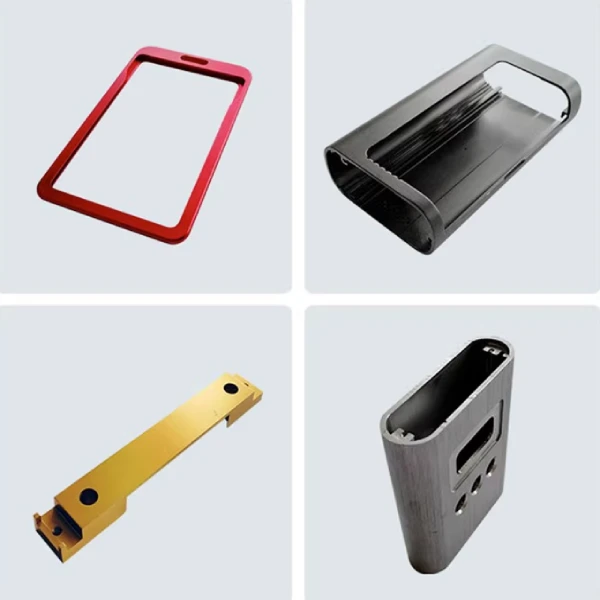
Design Considerations for Sheet Metal Bending
Sheet metal bending design is the design and optimization of manufacturing details such as engineered parts, component mounting, structure, manufacturing processes, and mounting accessories. These design elements have a direct impact on the function, quality and appearance of the product. Parts processed by bending equipment should take into account the characteristics and limitations of the bending process from the outset
We will analyze the above influencing factors and hope to solve the troubles you encounter.
For more information, you can refer to our Sheet Metal Design Guide.
Bending Radius
When sheet metal is bent and folded, the outer surface is stretched and the inner surface is squeezed, resulting in a curved shape, a rounded corner will appear at the bend, which we call the bending radius R.
When the bending radius is too small, the outer surface will be overstretched, and cracking occurs when it exceeds the tensile deepening resistance of the metal, which is a common quality problem, especially when the material's tensile deepening resistance isn't good, and the hardness is higher, the depth of the crack increases until it breaks.
When the bending radius is too large, the material will not be sufficiently extruded deformation, the internal rigidity will disappear with the external pressure at the same time make the material spring back, can not build the accurate bending angle.
So the reasonable design of the bending radius is very important work, and according to different types of materials, the bending radius also has different requirements. For example, for mild steel, the minimum bending fillet is about 0T; for brass and aluminum, the minimum bending fillet is about 6T; and for medium carbon steel, the minimum bending fillet is about 5T.
Bending Length
Another key pressing variable is the bending length. The required bending length usually depends on the design specifications of the sheet metal part. When bending a workpiece, in order to safeguard its quality, we need to ensure that the height of the straight edge of the bent product, h, is at least equal to the minimum height of the bent edge, hmin. This height can be calculated using the following formula:
h ≥ hmin = r + 2t
where r stands for the bending fillet angle, and t is the thickness of the bended part plate.
Bend to Bend Distance
When designing a structure with two consecutive bends, we have to consider if the U-shaped structure can accommodate the access of the bending tool, if the distance is too small, it will interfere with the applied pressure of the bending tool and lead to product deformation.
If your product's functional requirements limit the need for close bending structures that must be close together, supplemental material joining processes, such as welding or fastener riveting, can be implemented to obtain the correct geometry.
Distance of holes from bending line
When performing bending operations on blanks with holes, we must keep an eye on the control of the hole margin. If the hole position is too close to the bending edge, the shape of the hole may be distorted during the bending process. Therefore, the distance L from the hole edge to the bending edge needs to satisfy the following conditions:
L ≥ r + t when t < 2;
L ≥ r + 2t when t ≥ 2.
Similarly, where r and t represent the bending fillet angle and the thickness of the bending part plate, respectively
Bending process slots or holes
When performing bending operations on localized edges, in order to prevent tearing at the intersection due to stress concentration, process slots or holes should be designed at the corners of the bend where the bending stresses are greater, to spread out the strength of the material extrusion, to release the stresses received by the material or to displace the bending line to a certain distance.
Deformation of the bending cross-section
During narrow-edge bending, the shape of the cross-section in the deformed region changes, as evidenced by an increase in the width of the inner surface and a decrease in the width of the outer surface. This phenomenon is particularly significant when the plate width b is less than 3 times the plate thickness t. If the width b of the bent part has high precision requirements and bulging is not allowed, it is particularly important to make a process cut in the bending line in advance.
Bending Springback
During bending, plastic deformation coexists with elastic deformation. Once the external load is removed, the elastic deformation disappears, resulting in springback. The amount of springback is closely related to the material properties, the relative bending radius r/t and the bending angle. In order to ensure the accuracy of the workpiece, the rebound phenomenon must be fully considered in the bending process.
In order to reduce the springback, can take a variety of methods, such as mold repair, the use of different parts of the springback direction of the difference, local increase in the triangular ribs and so on. In addition, the use of swinging block of the concave mold structure is also an effective measure to reduce the springback.
Several factors affect the rebound:
- Materials with higher tensile strength have greater springback.
- Sharp bending radii usually have less springback.
- Wider mold openings result in more springback.The larger the bend radius relative to the material thickness, the greater the springback.
- Manufacturers often use the K-factor to calculate springback and better understand how to compensate and achieve tighter tolerances where accuracy is required.
Large Angle Bending Methods
When confronted with workpieces with significantly larger bending radii, it is often difficult to meet the requirements by conventional bending methods. Due to the large elastic deformation of these workpieces, it is not possible to obtain the required precise shape and dimensions by conventional methods. At this point, bending technology comes in handy.
Prior to bending, an axial tension force is applied to the sheet at a value such that the stress in the blank section is slightly above the yield point of the material. Subsequently, the bending operation is carried out under the continuous action of the tensile force. This method is effective in controlling the forming of workpieces with large bending radius.
Bending Methods for Complex Shape Parts
For those bending parts with complex shapes, it is not possible to do all the bending at once. Such workpieces need to be bent several times to achieve the desired shape. In arranging the process, we usually follow the order of bending the outer corner first, then the inner corner, and the latter bending can not interfere with the deformation formed by the previous one. Depending on the complexity of the workpiece, the number of bends may be two, three or more.
Stable Positioning Design
During the bending process, the offset of the blank is an important factor that affects the accuracy of the workpiece. To prevent deflection, we need to fix a part of the blank firmly on the mold before we start bending. The holes in the part can be used for positioning, or if no suitable holes are available, additional process holes can be considered to achieve accurate positioning.
Bending Methods for Long Strips
Long strips are also not suitable for ordinary bending methods when bending around the longitudinal axis. Roll forming technology is a more suitable alternative. Roll forming involves placing a long strip in a series of forming rollers in a straight line from front to back. As the rollers rotate, the strip is fed forward while being bent in the axial direction in turn. This method is capable of producing parts with complex cross-sectional shapes, and the forming rolls are relatively simple to manufacture, inexpensive, and have a long service life.
Processing Tolerance
Although sheet metal bending can achieve very precise dimensional accuracy, which is generally achieved by relying on advanced CNC bending machines, when encountering complex structures and ultra-precision bending parts, slight dimensional changes will affect the quality and use of the product.
Although CNC sheet metal bending machines are computer programmed to control the bending steps, there are many aspects of manual involvement, and inevitably there will be some errors caused by the human factor, due to the composition of the metal material, the thickness of the material, the fixing material, as well as the articulation of the work between the processes, are key factors affecting the quality of the work.
Here are some rules of thumb:
Minimum bending radius: R=T.
Bending angle: ± 1°.
Bend length: ±0.20 mm (0.010").
Get more examples of customized sheet metal parts and see the precision tolerances we can achieve.
Summary
Sheet metal bending offers significant advantages over other sheet metal fabrication processes, including higher yields, lower costs and a high degree of design flexibility. It also eliminates many of the difficulties associated with assembly techniques such as welding or riveting. With careful consideration during the design process and with the help of modern technology, sheet metal parts can be made stronger, lighter and faster through bending compared to conventional manufacturing methods.
For the past 20 years, Supro MFG has specialized in the product supply of custom sheet metal bending parts and has been actively involved in providing our customers with a full range of sheet metal fabrication solutions. We would be happy to discuss with you the feasibility options for the fabrication of your products and optimize the design of your products and the fabrication process to meet the needs of the application, so that your project maintains an economically advantageous edge.

